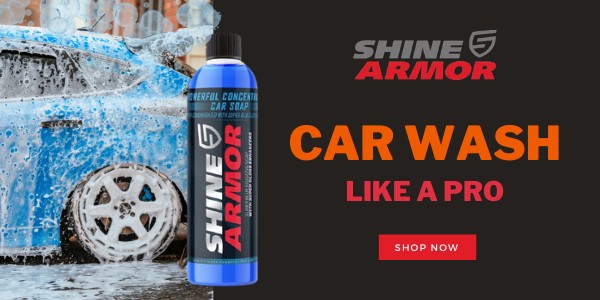Maintaining your vehicle’s cleanliness is more than just about aesthetics; it’s crucial for preserving its longevity and value. As dirt, grime, and road contaminants accumulate, timely cleaning becomes essential. While automated car washes offer a convenient solution, concerns about their impact on your car’s paint are common. Among these, touchless car washes have emerged as a popular alternative, promising a gentler cleaning experience. But Are Touchless Car Washes Safe for your vehicle? This comprehensive guide dives deep into the world of touchless car washes, exploring their safety, effectiveness, benefits, and drawbacks to help you make informed decisions about your car care routine.
Understanding Touchless vs. Traditional Car Washes
To understand the safety of touchless car washes, it’s helpful to differentiate them from traditional automated systems. Traditional car washes typically employ brushes and cloths that physically contact your car’s surface to scrub away dirt. While efficient, these methods can pose risks. The brushes, especially if not properly maintained or if carrying debris from previous vehicles, can create swirl marks and scratches on your car’s paint.
Touchless car washes, on the other hand, eliminate physical contact. They rely on high-pressure water jets and specialized detergents to clean your vehicle. This “hands-free” approach is often perceived as safer, but questions remain about its effectiveness and potential downsides.
A person using a pressure washer to pre-rinse a car, illustrating the high-pressure water system used in touchless car washes.
The Appeal of Touchless Car Washes: Benefits Explored
Touchless car washes have gained significant traction for several compelling reasons, particularly concerning vehicle safety and convenience. Let’s delve into the key advantages:
Reduced Risk of Scratches and Swirl Marks
The primary appeal of touchless car washes is the significant reduction in the risk of scratches and swirl marks. Since no brushes or abrasive materials touch your car’s paint, the chances of inflicting physical damage are minimized. This is especially important for car owners who are meticulous about maintaining a flawless finish. For those concerned about car paint protection, touchless systems offer peace of mind.
Gentler on Paint and Car Exterior
Beyond scratch prevention, touchless car washes are generally considered gentler on your vehicle’s overall exterior. The absence of friction from brushes means less wear and tear on the clear coat and paint layers. This is particularly beneficial for older vehicles or those with more delicate paint finishes. The focus on high-pressure water and advanced cleaning agents aims to lift dirt away without aggressive scrubbing.
Convenience and Speed
Like all automated car washes, touchless options are incredibly convenient and time-saving. They offer a quick way to clean your car, especially for busy individuals. The automated process requires minimal effort from the driver, making it a hassle-free solution for regular car maintenance.
Modern Cleaning Technology
Touchless car washes often incorporate advanced cleaning technologies, including sophisticated detergents and water recycling systems. Many facilities use specialized soaps designed to effectively break down grime and road film without being overly harsh on your car’s finish. Furthermore, the increasing adoption of water recycling in these systems reflects a growing environmental consciousness within the car wash industry.
 Shine Armor concentrated car soap.
Shine Armor concentrated car soap.
A bottle of Shine Armor concentrated car wash soap, representing the specialized cleaning agents used in modern car washes, including touchless systems.
Potential Drawbacks of Touchless Car Washes: Addressing Concerns
While touchless car washes offer numerous advantages, it’s essential to acknowledge their potential limitations and drawbacks to provide a balanced perspective:
Effectiveness on Stubborn Dirt and Grime
One common concern is the effectiveness of touchless car washes in removing heavily caked-on dirt, mud, or tar. Without physical scrubbing, these systems may struggle with particularly stubborn grime. In such cases, manual pre-cleaning or a traditional car wash might be necessary for a truly thorough clean. For vehicles that frequently encounter off-road conditions or heavy soiling, touchless washes alone might not always suffice.
Higher Cost Compared to Traditional Washes
Touchless car washes often come with a slightly higher price tag compared to brush-based automated washes. This is partly due to the more advanced technology and specialized cleaning agents they employ. While the added cost might be justified by the reduced risk of damage and gentler cleaning, it’s a factor to consider for budget-conscious car owners.
Water Usage and Environmental Impact
Despite advancements in water recycling, touchless car washes still utilize significant amounts of water to generate the high-pressure jets needed for cleaning. In regions facing water scarcity, this can raise environmental concerns. While many modern facilities are implementing water-saving technologies, the overall water footprint of touchless car washes remains a point of discussion.
Potential for Missed Spots and Inconsistent Cleaning
Due to the nature of spray-based cleaning, touchless car washes can sometimes miss certain areas or provide inconsistent cleaning, particularly in hard-to-reach spots like wheels, undercarriages, or around intricate trim details. The effectiveness can also depend on the specific equipment and maintenance of the car wash facility.
High Water Pressure Concerns
While generally safe, the high-pressure water jets used in touchless car washes can, in rare instances, pose risks to very delicate or loose vehicle components, such as antennas or side mirrors. It’s always advisable to ensure these parts are secure before entering any automated car wash. However, damage from water pressure alone is less common than damage from brushes in traditional systems.
How Touchless Car Washes Work: A Step-by-Step Process
Understanding the process behind touchless car washes can further clarify their safety and effectiveness. Here’s a typical step-by-step breakdown:
- Pre-Soak Application: The process usually begins with a pre-soak solution being sprayed onto the vehicle. This solution is designed to loosen dirt, grime, and road film, making them easier to remove in subsequent stages.
- High-Pressure Rinse: Following the pre-soak, high-pressure water jets thoroughly rinse the car, removing the loosened dirt and pre-soak solution.
- Detergent Application: Specialized cleaning detergents are then applied, often through spray nozzles. These detergents are formulated to break down tougher stains and contaminants without harming the car’s paint.
- High-Pressure Cleaning Rinse: Another high-pressure rinse cycle follows, removing the cleaning detergents and any remaining dirt and debris.
- Drying Process: Finally, the car is dried. Most touchless car washes use powerful air blowers to remove water from the vehicle’s surface. Some may also incorporate soft microfiber cloths for a spot-free finish, though these are typically static and do not pose the same scratch risk as traditional brushes.
Maximizing Safety and Effectiveness: Tips for Touchless Car Wash Users
To get the most out of touchless car washes while ensuring your car’s safety, consider these helpful tips:
- Pre-Wash Preparation: For heavily soiled vehicles, consider a quick pre-rinse at home with a hose to remove loose mud and debris before entering a touchless car wash. This can improve the effectiveness of the touchless cleaning process.
- Regular Wax or Ceramic Coating: Applying a protective layer of wax or ceramic coating to your car’s paint can enhance its resistance to dirt and grime buildup. This makes touchless car washes more effective in maintaining cleanliness and provides an added layer of protection against potential contaminants.
- Spray-On Top Coats: Between washes, using spray-on wax or ceramic detailers can help maintain the protective layer and keep your car cleaner for longer. These products add a sacrificial layer that can be easily washed away, further safeguarding your paint.
- Choose Reputable Facilities: Opt for well-maintained and reputable touchless car wash facilities. Properly maintained equipment and quality cleaning agents contribute to a safer and more effective car wash experience.
In Conclusion: Are Touchless Car Washes a Safe Choice?
Yes, touchless car washes are generally a safe and effective option for cleaning your vehicle. They offer a significant advantage in terms of paint protection by eliminating the risk of scratches and swirl marks associated with traditional brush car washes. While they might have some limitations in tackling extremely stubborn grime and may come at a slightly higher cost, the benefits of convenience, gentler cleaning, and reduced risk of damage make them a preferred choice for many car owners.
Ultimately, choosing between touchless and other car wash methods depends on your individual needs and priorities. For those prioritizing paint protection and convenience for regular car maintenance, touchless car washes are a safe and valuable tool. Just remember to consider pre-cleaning for heavily soiled vehicles and maintaining a protective wax or ceramic coating for optimal results.
Sources:
